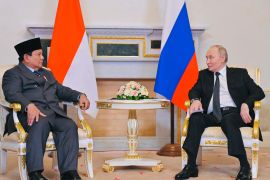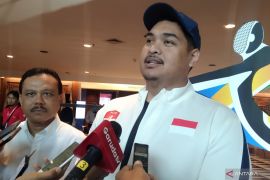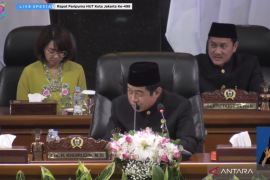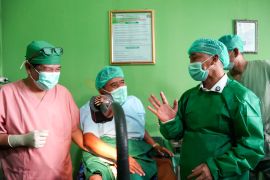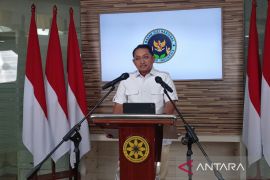In what was an extremely challenging year, management took certain actions to preserve cash flow and generate higher utilization. As a result WINS was able to generate higher operating profit and cash flow, thereby reducing the net gearing to 50% at the end of FY2016 compared to 57% the year before.
-Owned Vessels
In the Owned Vessel Division, full year revenues of US$58.9 million were 11% lower than the previous year. Gross Profit from Owned Vessels fell 5% YOY to US$8.6M for FY2016 compared to the previous year. To mitigate the slump in domestic demand for Offshore Support Vessels (OSV)s, we marketed our vessels more aggressively in international markets, resulting in some lump sum costs for mobilization and maintenance to prepare for international work in Q4.
The continuation in 2015 of some older contracts which had been suspended since the oil crisis started also led to higher utilization of high tier vessels for 2016 compared to 2015.
Our fleet cost reduction program continued, reducing direct costs by 12% YOY. By end 3Q2016, however, most of the "pre-oil crisis" contracts had been completed, which impacted our utilization rate. The poor visibility for oil prices for much of 2016 meant that only very few and very short contracts were given out during the year resulting in sporadic utilization of our high tier vessels. Our average fleet utilization remained around 56% for FY2016 compared to 57% the previous year.
-Chartering and Others
Gross profit from Chartering rose by 53% to US$3.7M and from Other income was flat at US$1.3M, compared to the previous year.
-Direct Expenses
We took delivery of one new Anchor Handling Tug (AHT) in 2016 and sold two older vessels. However, our cost control program effectively reduced total Direct Expenses for the Owned Vessels division by 12% to US$50M for the full year 2016 compared to US$57M the previous year. Our fleet cost reduction program included warm stacking of idle vessels and rationalizing crew. However, our company continues to prioritise Quality, Health, Safety and Environment (QHSE) which are crucial to maintaining our service quality and competitive advantage. There are therefore certain operational and maintenance expenses which are non negotiable.
-Gross Profit
Gross Profit for FY2016 rose by 6% to US$13.6M as compared to US$12.8M in the previous financial year.
-Operating profit and Cost Controls
Operating profit rose by 68% YOY to US$4.9M in FY2016 compared to US$2.9M in FY2015, despite a difficult business environment throughout the year. This was achieved through strict cost controls and streamlining of headcount, resulting in a 12% YOY drop in indirect expenses to US$8.7M for FY2016. Staff, travel and utilities costs were significantly reduced.
-EBITDA, Debt and Impairment
EBITDA for the full year 2016 was US$33M, a rise of 8% compared to US$30.7 mil the previous financial year. We also raised some new funds from vessel sales in 2016.
Interest expenses fell 13% to US$8.2M for FY2016 compared to US$9.4M the previous year, as total debt repayment for the year was US$40.5M. In our September 2016 results announcement, we disclosed that the management had taken a view to impair our operating fleet by US$13.1M to reflect the current market condition which has impacted ship values negatively. Our full year impairment loss increased to US$14.3M with additional impairment from the reclassification of 6 cold stacked vessels to be sold.
-Tax
Tax expense rose to US$2.2M from US$1.2M. This resulted from a reversal of the Deferred Tax Asset relating to vessel value impairment, amounting to US$0.5M and non-final taxes of US$0.4M expensed during the year.
-Net income attributable to Shareholders
Although Cash flow improved with EBITDA growth of 8% YOY and Operating Profit growth of 68% YOY for FY2016, Attributable Profit to Shareholders reverted to a loss because of asset impairment. Total loss attributable to shareholders for FY2016 was US$16.0M compared to a loss of US$5.7M in the previous year.
-Debt repayment and Assets
With the improvement in EBITDA and sale of vessels during the year, the Company made net debt repayments of US$27.7M during the year. Our total interest bearing debt, other than subordinated shareholder loans, reduced from US$160.7M at end 2015 to US$133M by end 2016. Net gearing improved to 50% at year-end 2016, compared to 57% at the previous year-end, which has also brought down our interest cost.
After impairment, our total fleet value is carried at US$323M. Our net book value was US$231M at end 2016.
-Industry Outlook
For most of 2016, the outlook for oil prices was very volatile with little confidence in a recovery. Over the two years 2015 and 2016 there were significant reductions of 26% and 23% respectively in global E&P spending. This prolonged lack of spending on Exploration and Development of oilfields will significantly slow down supply growth in the long term, according to research by the International Energy Agency (IEA), which warned that demand and supply trends point to a tight global oil market.
The OPEC decision to cut production by 1.2M barrels per day in November 2016 set a floor to the oil price causing it to rise to above US$50/brl. This, combined with the supply constraints from the two year investment slump has triggered a sustained recovery in oil prices and a general consensus that the bottom of the oil cycle is behind us. After two difficult years of spending declines, 2017 is expected to be the first year that global upstream spending is rising again. (Source: Barclays Research Survey 2017)
-Indonesian Activity
In Indonesia, upstream oil and gas spending is picking up from a very low base. For the first time in nearly two years, we are seeing OSV tenders for one to three year terms as several development projects in Indonesia are working towards production targets in the upcoming few years.
Although the level of activity is still very much below the good years in 2013-14, there is rising optimism for increased activity in upstream oil and gas.
There were only a handful of oil and gas projects in Asia Pacific which received Final Investment Decision in 2016, and the largest of them was the Tangguh project in Indonesia, with a total contract value of about US$8 billion. This and other local projects like Madura and Djangkrik will provide a base level of work for larger OSV vessels.
Although the level of tendering activity is picking up, actual utilisation activity in the OSV space has been very muted for Q1 2017 as there is a 6 to 9 month lag between tendering and start of operations.
There is still an oversupply situation in the OSV industry which will need some time for idle vessels to be contracted. Strong competitive pressures are causing charter rates to be bid down as shipowners aim to secure utilization through longer term contracts. There has been another round of rate reductions in early 2017. With the current round of tenders announced for 2017, we expect utilization rates to pick up towards the middle of the year as these projects start operations.
The Government has awarded the first concession to Pertamina Hulu Energy based on a new "Gross Split" regulation that replaces the "cost recovery" scheme. The new scheme should reduce the long bureaucratic delays experienced by the oil contractors in the past and provides certain incentives for deepwater projects. This should be more attractive for oil investment in Indonesia, but as this is a new regulation it remains to be seen.
-Strategy
Management continues to emphasize integrity, quality and safety as the core of the Company, We are working to increase utilization of vessels during this period but without compromising on our service quality. The longer term survivors of this drastic downturn will have an opportunity to jump ahead of competition when the offshore vessel industry recovers. To this end, we will invest selectively and improve our personnel capability while maintaining our cost efficiency. We believe that the oil and gas industry continues to be of critical importance to the Indonesian economy.
The recent introduction of the "gross split" has probably been most effective in cutting through layers of governmental bureaucracy, but now the onus of profitability lies within the control of the concession holders. Therefore we are confident that in the long term, high quality and efficient oil service providers will be sought after.
Our contracts on hand as at end January 2017 totalled US$89.4M.
About PT Wintermar Offshore Marine
PT Wintermar Offshore Marine Tbk (IDX:WINS) is an Indonesian offshore marine services company that owns a fleet of 80 vessels ready to handle a large variety of marine support services required in upstream oil and gas exploration and production activities including transporting crew, equipment and supplies, as well as providing services such as anchor handling, towing, and mooring of offshore rigs. Our young and growing fleet, comprising a wide variety of vessel types, enables us to offer innovative vessel and logistics solutions to serve our client base of multinational oil and gas companies. In 2011, WINS became the first shipping company in Indonesia to be certified with Integrated Management System by Lloyds Register Quality Assurance, comprising ISO 9001:2008 (Quality), ISO14001:2004 (Environment) and OHSAS 18001:2007 (Occupational Health and Safety). For more information, please visit www.wintermar.com.
Contact:
Ms Pek Swan Layanto
Investor Relations
PT Wintermar Offshore Marine Tbk
Tel: +62-21-530-5201 Ext 401
Email: investor_relations@wintermar.com
Reporter: PR Wire
Editor: PR Wire
Copyright © ANTARA 2017

